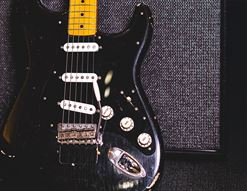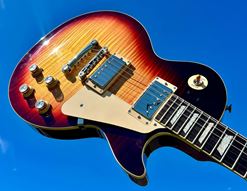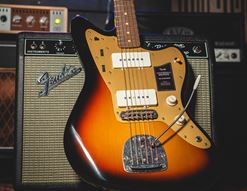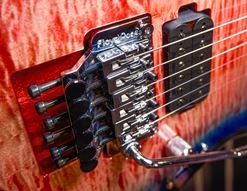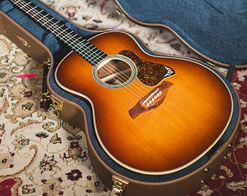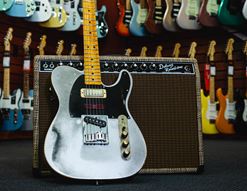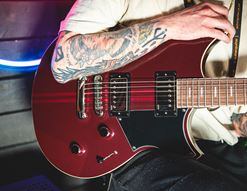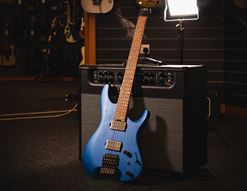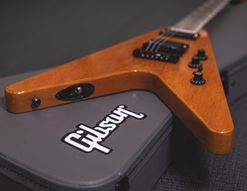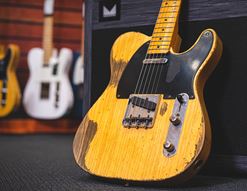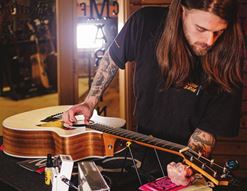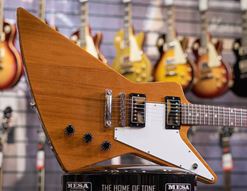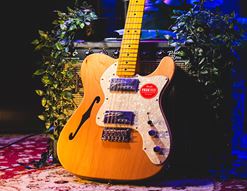Are you looking for ways to improve your guitar tone? Who isn’t, right? We all need a little help now and then to dial in killer tones, and one of the great things about guitarguitar is that we are all experienced guitarists, who are happy and willing to share that knowledge!
Today, I’ll share a few ways in which you can think about your sound. I’ll give you some tips to try out, across the general subject of tone. If you like the results, feel free to apply them to your ongoing practice; if some of them don’t resonate, just let them go! We’re all constantly chasing tone, and we all have different ideas about what ‘great tone’ is, so results will differ!
Contents
1. Know What You’re Aiming For
3. Less Gain Can Sometimes be More Gain
7. String Gauge Matters…Less Than You Think
9. Get Acquainted With a Compressor
10. Your Rules are YOUR Rules!
What is ‘guitar tone’?
Firstly, let me clarify what I mean when I talk about ‘guitar tone’. Guitar tone is the sound that reaches your ears from either a speaker, a headphone or a soundhole. It’s not really what you’re playing but how it sounds when you do play, if that makes sense? The sound itself, as it were.
Now, many players would state that tone begins in the fingers and I’d agree with that up to a point, but with all the best will in the world, a vintage Danelectro into a Fender Twin will never ever sound like an ESP into a Friedman, you know? So I’ll be addressing things from this point of view, and looking into ways of improving tone across the board.
1. Know What You’re Aiming For
This first tip encapsulates lots of smaller points, but we can keep it pretty simple: have a specific goal in mind when you approach the subject of your tone. The internet is your friend on this one, because looks can often be deceiving when it comes to guitar sounds.
What am I talking about? Well, let’s say that you love Jimmy Page’s early Led Zeppelin sound. If you are used to seeing pictures of Page in action, you’ll no doubt be thinking that a Gibson Les Paul Standard and a Marshall stack are the correct tools for this job.
Well, you’d be wrong! Page used that stuff live, but in the studio, the first few records were cut using a Fender Telecaster and a modified Supro combo! A little sleuthing often results in learning stuff about tone that isn’t always very clear otherwise.
My advice here is to focus on sounds you like and use those as springboards for your own sounds, whether you can match the gear or not.

2. Use Reference Tones
This could be an extension of the first tip, but it’s more about paying attention to the actual sound, and less to the equipment used. Recently, I wrote in a blog about Rick Rubin that he literally blasted sections of AC/DC’s Back in Black in the studio when he was with The Cult, because that was the type of sound he was after. He listened directly and got the engineers to copy the tone as closely as they could. Not a bad idea!
So yes, when dialling up your blues tone, let’s say, it’s a great idea to have a recording of Stevie Ray Vaughan or BB King handy to A/B with your own sound. Assess it: do they have more mids? Less low end? Volume will always be a factor (your tone changes as it gets louder) but you might be surprised how helpful this practice can be!

3. Less Gain Can Sometimes be More Gain
Keeping the gain control slightly less than full-on can really improve your tone. Obviously, some extreme genres call for extreme sounds, but in general, slightly less gain - even for heavy sounding music - can work well.
Why? Because gain is essentially compressing your signal, and the more compressed it gets, the more ‘squashed’ it sounds, as your tone loses dynamic range. Ever wondered why your amp’s heavy sounds are somehow quieter than the cleans? This is why!
Find a good middle ground where you get the grit you’re after but without flattening your signal with overdrive, and you’ll probably sound tons better!
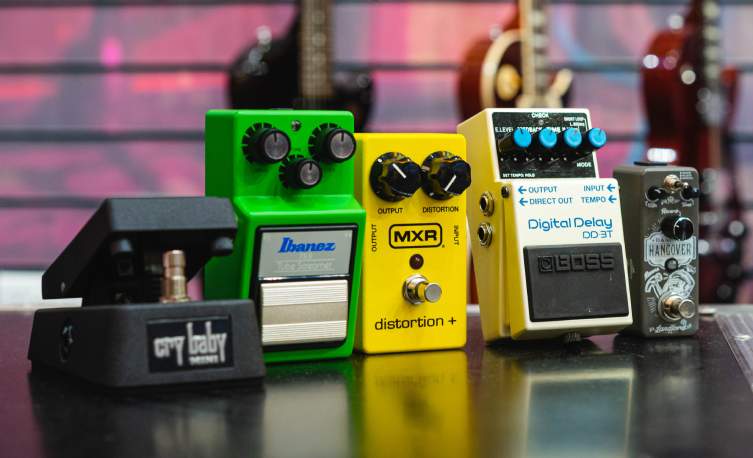
4. Be Mindful of Effects
I won’t coach you today on whether you should or shouldn’t use effects, because that’s a matter of taste and context. What I will say, though, is this: be mindful of how you’re using effects. Here are a few examples of what I mean:
- If you use delay a lot, change up the delay times and the effect level to promote more variation and dynamism in your playing. One delay setting for an entire set will make your guitar sound flat and boring.
- Consider turning effects on for small amounts of time: Eddie Van Halen is famous for this, but the ‘less is more’ adage applies across the board. Effects lose their musical potency when they are permanently on.
- Pay attention to your wah pedal technique. Rocking your foot fully backwards and forwards in time with each song’s tempo is a dull way to use a potentially creative effect. Consider varying your ‘sweep’ and hold the pedal at certain frequencies for cool sounds.
5. Consider Your Pick
Do you stick to only one type of pick/plectrum? Why is that? Different picks are good for different things, and there is no reason why you can’t change them around to suit your music.
Size, shape, thickness and material all change your playing in certain ways. Here are a few examples you may want to try out:
- An orange 0.60mm Tortex pick is great for acoustic strumming
- A Dunlop Jazz III XL is an exceptional ‘shred’ pick
- Celluloid will give a really retro feel with lots of clarity and control
- Heavier gauge picks sound warmer
- Lighter gauge picks sound sharper and more percussive
- There is no such thing as a ‘bass pick’, just picks. Those triangle-shaped picks are for guitars all day long
- If in doubt, a regular shape 0.88mm ‘Tortex Green’ is the one to go for (personal opinion!)
My advice is to try something distinctly different to what you normally use, if only to freshen up your playing and offer a new experience. If you are a habitual Jazz III person, I recommend you try a yellow Tortex .73mm and see how that changes your playing.
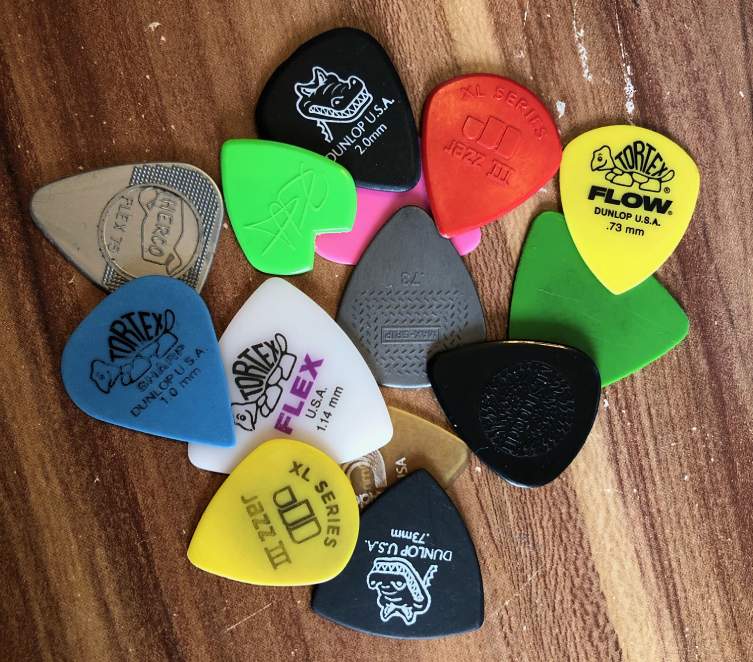
6. Lose the Pick Altogether
One option for dramatic tonal change is to not use a pick at all. Jeff Beck, Lindsey Buckingham, Mark Knopfler and Robby Krieger are all top players who’ve (largely) eschewed the plectrum in favour of their own digits.
Playing fingerstyle allows you a wealth of subtle control over your tone, not to mention a number of fingers to apply to strings! You’ll develop sounds and overtones that were not previously available, and you may find your overall tone improves massively. Try it, it’s free!
7. String Gauge Matters…Less Than You Think
We guitar players obsess over string gauges, don’t we? What’s the perfect hybrid gauge for our particular style? Well, it’s fair enough to get into this subject on a ‘feel’ basis, because the relative heaviness or lightness of your strings will affect your speed and accuracy, but here’s a bombshell for you: I’ve yet to be truly convinced that string gauge plays a huge part in tone.
Say whaaaaa?

Okay, I’ll qualify that by adding ‘with electric guitars that have overdrive on them’. I sincerely do not think many people can hear the difference between a Les Paul strung with 10s going into a distorted Mesa Boogie and a Les Paul string with 11s doing the same. I honestly don’t think you can tell a tonal difference. Without Googling it, can you tell a guitarist’s string gauge just from hearing their playing on a song?
Right, exactly. So if your string gauge feels comfortable to you, then move on. I suppose this is a bit of an ‘inverse tip’, but people do get caught up in it, and I think your other minute decisions (hand technique, guitar pick, length of cable, even) play a bigger role.
YouTube star Rick Beato doesn’t agree with this, so I’ll leave his video here for your rumination, though I’d say his testing conditions are hardly neutral!
8. EQ for The Situation
This tip refers to the curious but entirely real phenomenon of your guitar tone sounding different at the rehearsal room than it does at home. Volume, as already mentioned, plays a huge part in this (the reasons why employ more physics than I can endure), but other elements do, too. The room itself is different, you have other instruments to contend with (eating up your frequencies) and there are more human bodies in there, all absorbing frequencies merely by existing. This is compounded when you arrive at the gig, where the sweaty full-house audience have even more of a bearing.
All of this goes to say that what sounds good at home probably doesn’t still sound good at rehearsal. Don’t expect your best at-home amp settings to cut it at rehearsal: put every amp dial to 12 o’clock and start again, using your ears to capture the frequencies that are making it through the miasma. Your tone at this point may sound mid-heavy and slightly brutish (in other words, rubbish) on its own, but it’ll sound magnificent within the context of the band playing together. Get that right, and the whole band’s sound improves!
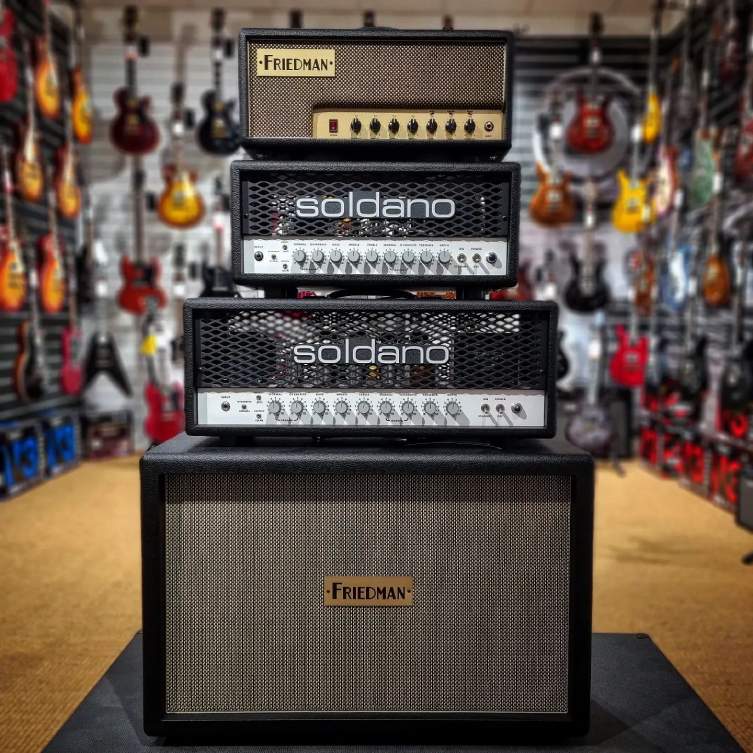
9. Get Acquainted With a Compressor
If you play lots of clean sounds, or even mildly overdriven sounds, then a well-aimed compressor can help you hit the bull’s eye when it comes to tone.
As you may know, a compressor chops off the extreme top of your guitar’s signal and boosts the quieter notes a little, making the sound a lot more consistent and regular. In effect, you get a more slick, professional coating to your tone, particularly if you like to play with arpeggios and other picked notes. Compressors are like an extra layer of production on your guitar’s sound, and they can be the difference between you sounding excellent and merely pretty good.
I’d reiterate that the effects of a compressor are lessened with distortion, because distortion (in all of its forms: overdrive, distortion, fuzz etc) acts as a compressor anyway. Too much compression robs your sound of life, but the right amount can really transform your tone.
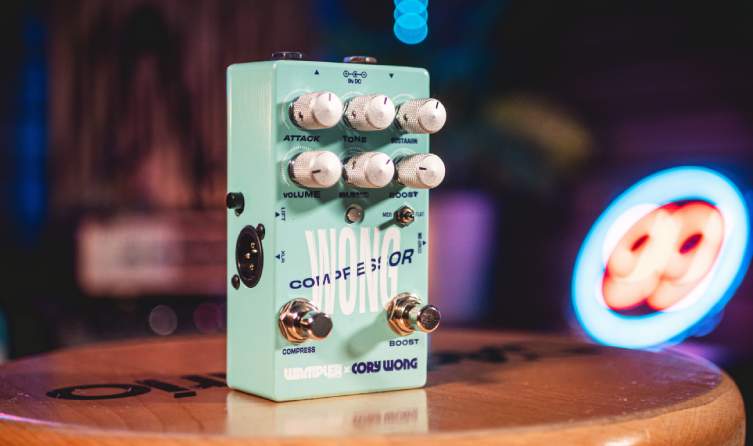
10. Your Rules are YOUR Rules!
This last tip is to help with your confidence and self-trust. You may have come up with a cool way of getting a great sound that flies in the face of all accepted wisdom. You may do something pretty radical and against the established rules, but if you like the end result then that’s all that matters!
When I interviewed Steven Wilson, he told me about how much he loved putting all of his reverbs and delays into the front of his amp instead of the amps’ effects loop, and that guy knows a thing or two about great guitar sounds!
“You get this sense that the reverb is always trying to break through, and it’s being compressed down with the gain. Then you stop playing and get this big cloud of distorted, ugly reverb. But it’s so rock n roll! I love it!”
So, the point is, it is all about your sound, not mine, not us in guitarguitar or your pal down the pub. If you’ve followed your own intuition and it has taken you somewhere interesting/thrilling/new, then don’t second-guess yourself: get out there and let us hear it!
Good luck!




